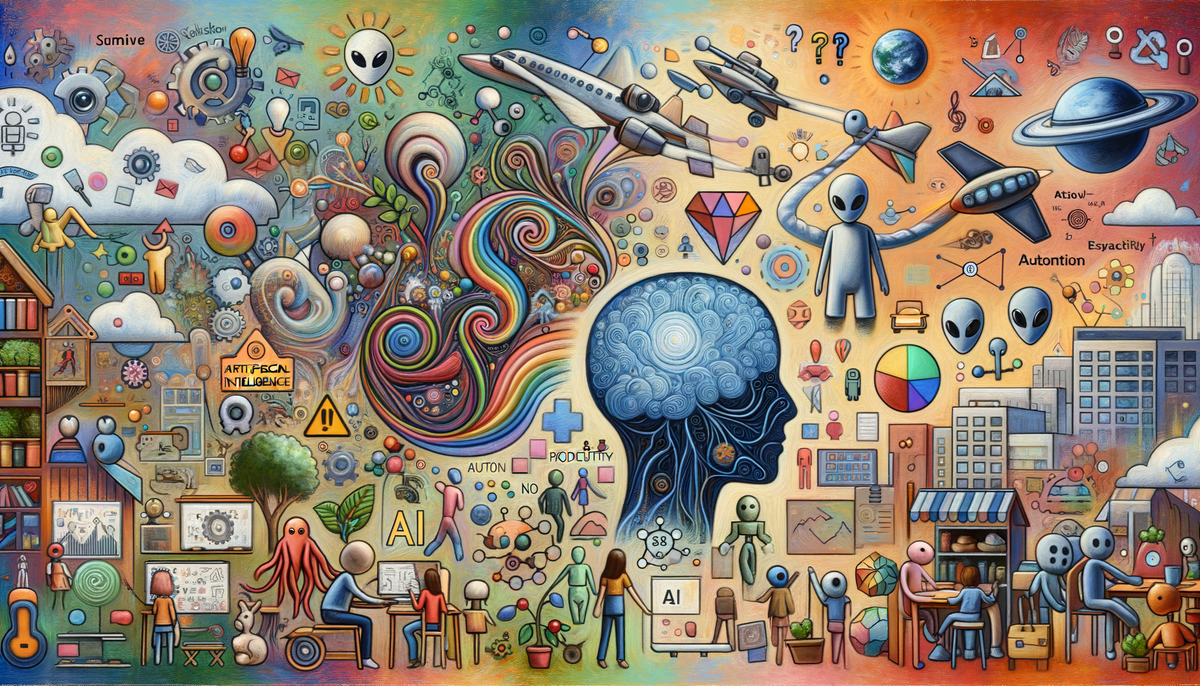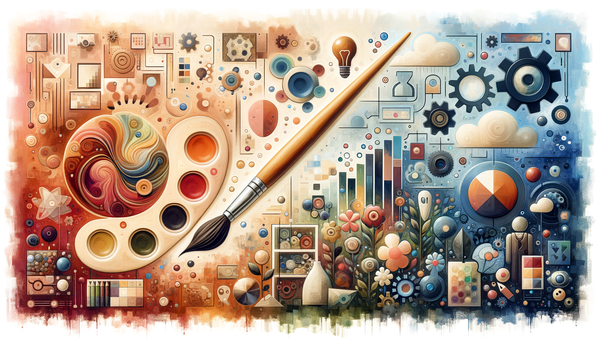Exploring AI Innovations and Impacts

It only takes one glimpse—a teenager delving into interactive coding tutorials, an engineer analyzing the life-cycle emissions of AI hardware, or a legal battleground erupting over the unauthorized use of music—to reveal how deeply artificial intelligence has woven itself into the fabric of our lives. Across education, sustainability, legal debates, gaming benchmarks, media authenticity, digital commerce, and communication, AI is reshaping industries and future narratives simultaneously.
Guiding the Next Generation: The Imperative of AI Literacy
In modern households, conversations around artificial intelligence have shifted from abstract futuristic predictions to daily realities. As detailed in the Forbes article, "Why Parents Must Help Their Teens Become AI Literate and How To Start" (Forbes), parents are now called upon to demystify AI for their teens. No longer is coding just a niche skill—understanding AI applications, from virtual assistants to personalized recommendation algorithms, is emerging as a cornerstone of future success.
By fostering candid discussions and exploring interactive platforms together, parents not only co-learn the latest trends but also prepare their children to navigate a world where ethical considerations are as critical as technical expertise. I remember when I first taught my niece how a simple chatbot worked, and her eyes lit up understanding that behind every digital interaction was a blend of art and science. Parents today must function as both guides and curious explorers, ensuring that future innovators are well-equipped not only technically but also ethically to handle AI’s multifaceted challenges.
Sustainable AI: Measuring the Carbon Footprint of AI Hardware
While innovation drives technology forward, environmental stewardship remains an equally pressing objective. A groundbreaking study by Google, revealed in SemiEngineering’s piece, "Cradle-To-Grave Analysis Of The Carbon Footprint of AI Hardware (Google)" (SemiEngineering), evaluates the full life-cycle greenhouse gas emissions—from material extraction to disposal—of specialized AI hardware accelerators like Tensor Processing Units (TPUs).
This analysis introduced the compute carbon intensity (CCI) metric, a crucial measure that not only benchmarks efficiency but also underscores the strides being made in eco-friendly AI technologies. The reported threefold improvement in CCI from TPU v4i to TPU v6e serves as a compelling example of how concerted efforts in hardware innovation can bring us closer to a greener tech future. One might view this evolution as a metaphor; just as a tree's growth must consider both robust roots and expansive branches, sustainable AI must balance ingenious design with environmental impact.
For those interested in the concurrent conversation on AI innovations and their inherent challenges, you might find additional perspectives on our Innovation and Challenge series illuminating.
Copyright Conundrums: Music, AI, and Global Legal Tensions
Across borders, the creative industries are wrestling with the implications of AI’s voracious appetite for data. In the legal fray detailed by The National Law Review, heavyweight Indian music industry players—Saregama, T-Series, and the Indian Music Industry—have taken lawsuit measures against OpenAI (The National Law Review). The crux of the matter lies in the unauthorized use of songs, lyrics, and recordings for AI training purposes.
This controversy has ignited a global debate, where questions of fair use are now being re-examined. Music and creative industries worldwide find themselves compelled to reassess their data sourcing practices. In a recent court setting in New Delhi, protective arguments against the unlicensed usage of copyrighted material have reignited calls for stricter risk management and more transparent licensing agreements.
In the midst of these legal tussles, one cannot ignore a timeless perspective, penned by William Gibson:
“The future is already here – it’s just not very evenly distributed.”
Such sentiments serve as a reminder that as we tread deeper into the AI era, equitable access and ethical procurement of data must become standard practice for sustaining innovation and creativity.
Game On: Benchmarking AI Through the Lens of Pokémon
There’s an undeniable charm in revisiting childhood classics to test modern breakthroughs. Anthropic’s playful yet innovative benchmarking of its latest AI model, Claude 3.7 Sonnet, by using the classic Game Boy game Pokémon Red, exemplifies how gaming can provide tangible demonstrations of AI progress (TechCrunch). In this scenario, the AI model's achievement—defeating in-game gym leaders—merges nostalgia with the cutting edge, offering a unique glimpse into AI's expanding cognitive capabilities.
By leveraging extended memory and enhanced computational power, Claude 3.7 made rapid strides compared to its predecessor, Claude 3.0, which metaphorically "couldn't leave its starting town." Such benchmarks are not merely games—they are markers for testing the boundaries of what AI models can achieve in complex problem solving, with implications ranging from logistics optimization to advanced decision-making frameworks.
This creative benchmarking is a stark contrast to traditional clinical data tests, symbolizing a broader cultural shift where play and work intersect within the AI domain. For an ongoing discussion regarding emerging trends in AI applications, consider exploring our comprehensive coverage on Chatbots, Market Trends, and Innovations.
The Neuroscience Behind Digital Misinformation: Can Brainwaves Detect Fake News?
In an era where digital misinformation spreads like wildfire, innovative research is seeking new ways to decipher human cognitive responses to fake news. While details remain in their infancy, emerging projects suggest that analyzing brainwaves could potentially reveal susceptibility to misleading information. The initiative discussed in PsyPost (PsyPost) represents a fusion of neuroscience and AI, where machine learning models decode patterns in neural activity to flag moments of cognitive dissonance induced by falsehoods.
Imagine a near future where AI-equipped devices assess cognitive responses in real-time, offering users subtle cues to re-examine questionable content before sharing it further. Such advancements could drastically alter how we interact with news and social media. However, as with all emerging technology, ethical and privacy considerations loom large. Responsible deployment of these tools will require rigorous examination to balance the transformative potential with respect for individual privacy.
This notion aligns profoundly with Fei-Fei Li’s vision:
"I believe in the future of AI changing the world. The question is, who is changing AI? It is really important to bring diverse groups of students and future leaders into the development of AI."
Integrating insights from various disciplines, it becomes clear that interdisciplinary collaboration will determine the pace and principles with which these powerful tools benefit society.
Breaking Barriers in Digital Commerce: AI Meets Cryptocurrency
The fusion of AI with blockchain is creating novel paradigms in global commerce. With Rezolve Ai’s announcement of a colossal $1 billion bitcoin reserve aimed at supporting its cryptocurrency payments platform (PYMNTS), we are witnessing an audacious reimagining of everyday transactions. This innovative merging of digital assets and artificial intelligence paves the way for a seamless, efficient, and cost-effective global payments system.
The integration will not only enable consumers to execute transactions using bitcoin, USDT, and other major cryptocurrencies but also empower retailers by mitigating hefty merchant fees and facilitating quick crypto-to-fiat conversions through AI-enhanced transaction intelligence. CEO Daniel Wager’s vision, powered by an initial $100 million investment ramping up to the billion-dollar reserve, signals a shift towards a more inclusive and technologically integrated financial landscape.
Meanwhile, regulatory dialogues are intensifying, with policymakers urging U.S. lawmakers to enact stringent yet forward-thinking digital asset regulations. This intersection of AI, blockchain, and regulatory policy underscores the deeply interconnected nature of modern technological ecosystems. Readers interested in the dynamic interplay of AI and regulatory debates might enjoy our broader discussion on New AI Concerns and Innovations.
Clutter or Clarity: Navigating Genuine Communication in an AI-Driven Era
In our digitally saturated era, where automated chatbots and algorithm-generated responses often dominate our communications, finding clarity becomes a challenge. As discussed in Forbes’ "Clutter Or Clarity: The Potential Of Genuine Communication Amid AI" (Forbes), the balance between utilitarian AI efficiency and heartfelt, genuine dialogue is more crucial than ever.
Although AI-driven communication tools excel in processing and delivering information at lightning speeds, they frequently lack the subtle human nuances—empathy, intuition, and sentiment—that foster lasting connections. This ongoing dialogue urges us to foster interactions that are rooted in authenticity. Genuine communication, championed by a commitment to empathy, can serve as a counterbalance to the onslaught of digital noise.
In many ways, this represents a return to classical modes of communication, where the art of conversation was an essential tool for community building. Today, as we straddle the line between automation and human interaction, the challenge is clear: leveraging AI to enhance our communication without sacrificing the intrinsic human touch. For further reflections on the societal impacts of AI, our article Controversies, Innovations, and Future Prospects provides a nuanced analysis on how technology continues to forge new connectivity paradigms.
Bringing It All Together
Across these varied narratives—from empowering the next generation with AI literacy to the technical breakthroughs that reduce the carbon footprint of our devices; from high-stakes copyright disputes to whimsical yet meaningful gaming benchmarks; from pioneering brainwave research in detecting fake news to disrupting global commerce with cryptocurrency-enabled platforms, and finally to navigating the delicate balance of digital communication—the multifaceted impact of artificial intelligence becomes undeniably clear.
The common thread running through each of these developments is the transformative power of AI in reshaping our interactions, our economies, and our societal frameworks. While technical advancements propel us forward, they also invite us to reflect on ethics, sustainability, and the fundamental human need for genuine connection.
A future where AI not only augments our capabilities but also enriches our discussions and respects our shared environment is within reach if we continue to prioritize balanced development. As A.R. Merrydew once whimsically put it,
"It was then, that the most ridiculous idea in the entire history of the universe entered his cranium. He had absolutely no idea where it came from. He blinked several times, at the magnitude of its absurdity."
This reminds us that while innovation may often seem absurd in its audacity, it is precisely this bold questioning and reimagining that drives progress.
In sum, our journey through these arenas of AI underscores a pivotal point: technology is most powerful when it is informed by ethics, guided by curiosity, and tempered by a genuine respect for human values. For more in-depth discussions and the latest research, consider exploring our ongoing series on New AI Concerns and Innovations as well as AI Innovations Challenges.




